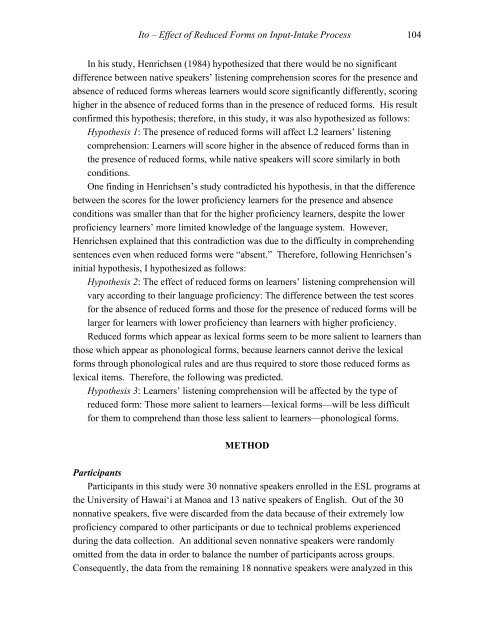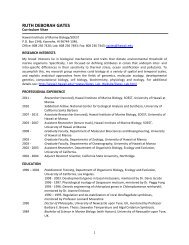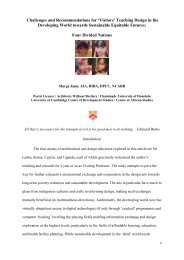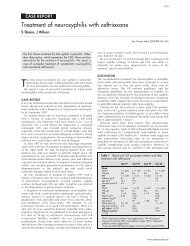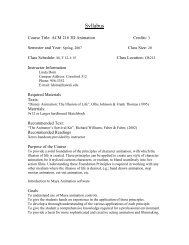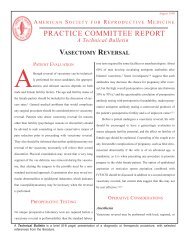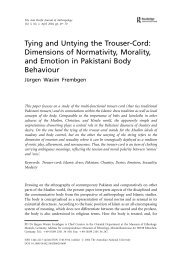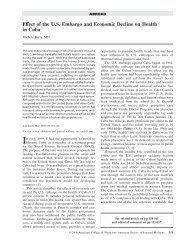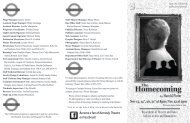EFFECT OF REDUCED FORMS ON ESL LEARNERS' INPUT ...
EFFECT OF REDUCED FORMS ON ESL LEARNERS' INPUT ...
EFFECT OF REDUCED FORMS ON ESL LEARNERS' INPUT ...
You also want an ePaper? Increase the reach of your titles
YUMPU automatically turns print PDFs into web optimized ePapers that Google loves.
Ito – Effect of Reduced Forms on Input-Intake Process 104<br />
In his study, Henrichsen (1984) hypothesized that there would be no significant<br />
difference between native speakers’ listening comprehension scores for the presence and<br />
absence of reduced forms whereas learners would score significantly differently, scoring<br />
higher in the absence of reduced forms than in the presence of reduced forms. His result<br />
confirmed this hypothesis; therefore, in this study, it was also hypothesized as follows:<br />
Hypothesis 1: The presence of reduced forms will affect L2 learners’ listening<br />
comprehension: Learners will score higher in the absence of reduced forms than in<br />
the presence of reduced forms, while native speakers will score similarly in both<br />
conditions.<br />
One finding in Henrichsen’s study contradicted his hypothesis, in that the difference<br />
between the scores for the lower proficiency learners for the presence and absence<br />
conditions was smaller than that for the higher proficiency learners, despite the lower<br />
proficiency learners’ more limited knowledge of the language system. However,<br />
Henrichsen explained that this contradiction was due to the difficulty in comprehending<br />
sentences even when reduced forms were “absent.” Therefore, following Henrichsen’s<br />
initial hypothesis, I hypothesized as follows:<br />
Hypothesis 2: The effect of reduced forms on learners’ listening comprehension will<br />
vary according to their language proficiency: The difference between the test scores<br />
for the absence of reduced forms and those for the presence of reduced forms will be<br />
larger for learners with lower proficiency than learners with higher proficiency.<br />
Reduced forms which appear as lexical forms seem to be more salient to learners than<br />
those which appear as phonological forms, because learners cannot derive the lexical<br />
forms through phonological rules and are thus required to store those reduced forms as<br />
lexical items. Therefore, the following was predicted.<br />
Hypothesis 3: Learners’ listening comprehension will be affected by the type of<br />
reduced form: Those more salient to learners—lexical forms—will be less difficult<br />
for them to comprehend than those less salient to learners—phonological forms.<br />
METHOD<br />
Participants<br />
Participants in this study were 30 nonnative speakers enrolled in the <strong>ESL</strong> programs at<br />
the University of Hawai‘i at Manoa and 13 native speakers of English. Out of the 30<br />
nonnative speakers, five were discarded from the data because of their extremely low<br />
proficiency compared to other participants or due to technical problems experienced<br />
during the data collection. An additional seven nonnative speakers were randomly<br />
omitted from the data in order to balance the number of participants across groups.<br />
Consequently, the data from the remaining 18 nonnative speakers were analyzed in this


